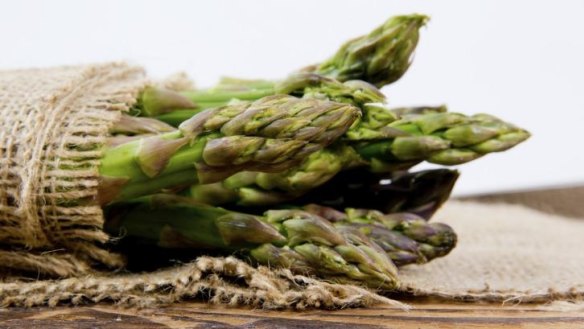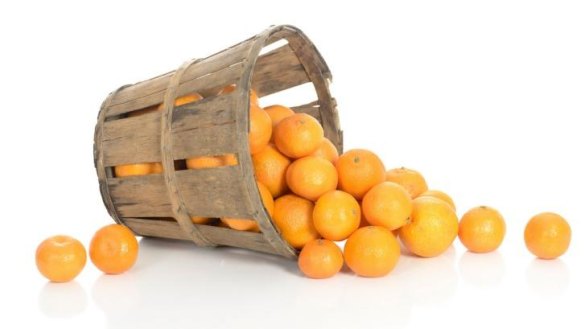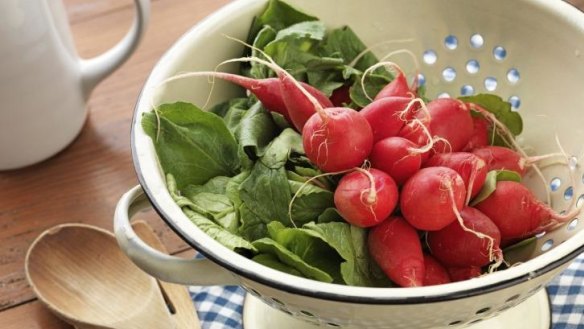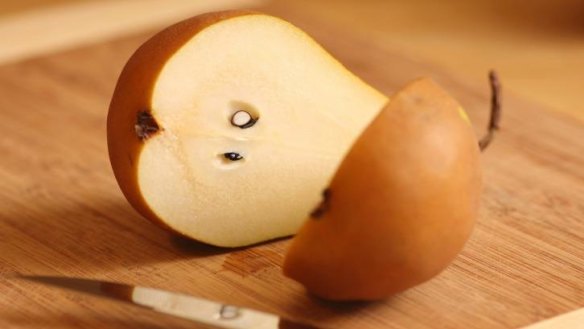How to make your fruit and vegetables last longer

I opened my refrigerator the other night to complete disappointment. It wasn't that I hadn't made it to the markets; in fact the refrigerator was full of food.
Just a few days before, I had placed mountains of fresh vegetables and fruits in the fridge, only to return to wilted leafy greens, mouldy berries, limp carrots and squishy eggplant. I felt as rotten as those vegetables when I stuffed so many untouched foods into the compost pile.
I do not have the time to make multiple trips to the markets each week to restock fresh produce.

So I did a little digging, with the help of the California-based Berkeley Ecology Centre and other sources, to find out how I could keep my produce fresh, crisp and ready to feed my family for a week after purchasing. What did I find? I found that storage is everything.
Starter tips
- Buy fresh and local. It's likely that a freshly picked fruit or vegetable will last longer than an item that has been riding on a truck or camped out in a warehouse for weeks.
- Give your produce space to breathe and you will give it a longer shelf life. In other words, try not to overcrowd your crisper drawers or your fruit bowl. One layer deep is a good rule of thumb.
- Do not store fruits and vegetables together; fruits emit a ripening agent that can ripen and spoil neighbouring vegetables. (Placing a ripe banana next to almost anything is a surefire way to ripen the item in the adjacent seat. It's the same story with any fruit that has started to brown, mould or sour; keep them away from the fresher pieces.)
- Never seal fruits or vegetables in an airtight bag or you will hasten the decay.
- Eat your most perishable items first, so perhaps plan for artichokes and asparagus to be eaten before cucumbers or cauliflower.

Produce storage guide
Vegetables
- Asparagus: Store upright in a glass with water covering the bottom inch of the stems at room temperature for a week.
- Beetroot: Cut off the tops and leaves to retain firmness, and store for one to two weeks in an open container in the refrigerator topped with a wet towel.
- Brussels sprouts: Store in an open bowl or container in the refrigerator for one to two weeks.
- Cabbage: Store uncut in the refrigerator for up to two weeks.
- Carrots: Cut off the tops and leaves to retain firmness, and store for one to two weeks in an open container in the refrigerator topped with a wet towel.
- Cauliflower: Store uncut in the refrigerator for a week.
- Celery: Store uncut in the refrigerator for two weeks.
- Corn: Truly best eaten the day it is picked. Otherwise, store in the refrigerator in its husk for a few days.
- Cucumbers: Store at room temperature, not near bananas, melons or tomatoes.
- Eggplant: Find a cool, dry, dark place other than the refrigerator.
- Garlic: Find a cool, dry, dark place other than the refrigerator.
- Green beans: Store in a produce bag or wrapped in a paper towel in the crisper drawer of the refrigerator.
- Herbs: Pretend they are a bouquet of flowers and stick the stems in a glass of water and store in the fridge. Wash and use stems and leaves as needed.
- Leafy greens: De-stem, then place leaves in a bowl with water and rinse until clean. Dry leaves and wrap in a dish towel, then store in the crisper for a week or more.
- Mushrooms: Store in a paper bag in the crisper drawer of the refrigerator for a week. Wash just before using.
- Onions: Find a cool, dry, dark place other than the refrigerator.
- Potatoes: Find a cool, dry, dark place other than the refrigerator.
- Pumpkin: Choose a cool, dry, dark place other than the refrigerator.
- Radishes, turnips and parsnips: Cut off the tops and leaves to retain firmness, and store for a few weeks in an open container in the refrigerator with a wet towel on top.
- Sprouts: Wrap in a paper towel or produce bag and store in refrigerator for three days.
- Squash, zucchini: Store in the refrigerator for five days.
- Tomatoes: Do not refrigerate, as they are cold-sensitive. Store them on the counter away from other fruits.

Fruits
- Apples: Store in crisper drawer of refrigerator, or a cool, dark place outside of the refrigerator.
- Avocados: Ripen in a brown paper bag at room temperature, move to the refrigerator when ripe.
- Bananas: Do not refrigerate; keep separate from other fruits and vegetables.
- Berries: Store unwashed in the refrigerator for one to two weeks, ideally in one layer in a paper bag.
- Cherries: Store in the refrigerator unwashed for three to five days. Wash before serving.
- Citrus: Store at room temperature because citrus fruits can absorb flavors from other foods in the refrigerator.
- Grapes: Store in a paper bag in the fridge.
- Kiwi fruit: Keep at room temperature for a few days or in the refrigerator for a week.
- Mango: Store at room temperature until ripe, then move to the refrigerator.
- Papaya: Store at room temperature until ripe, then move to the refrigerator.
- Pears: Keep at room temperature. Neighbouring apples will hasten a pear's ripening.
- Rockmelon: Leave uncut at room temperature, out of the sun.
- Stone fruit (apricots, peaches): Store at room temperature stem-end down to ripen, or in the refrigerator when already ripe.
If you find yourself with a handful of wilted vegetables despite your best efforts to wrap and store them appropriately, make a soup. Saute wilted onion, carrots and celery, then add stock, beans, wilted dark leafy greens and a whole grain such as rice or barley. You'll save the vegetables from the garbage and feed your family all at once.
Casey Seidenberg is co-founder of Nourish Schools, a Washington DC-based nutrition education company.
The Washington Post
The best recipes from Australia's leading chefs straight to your inbox.
Sign up